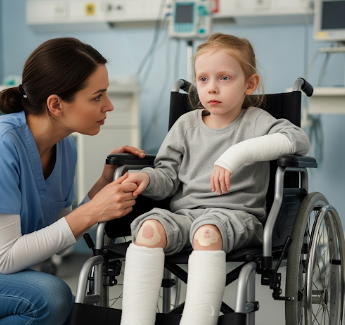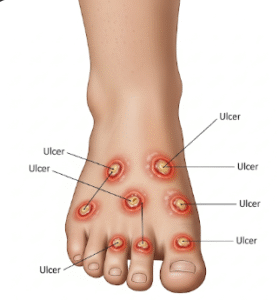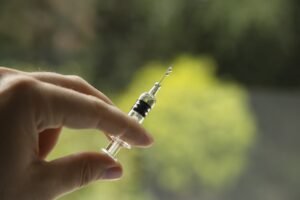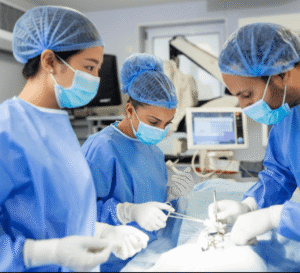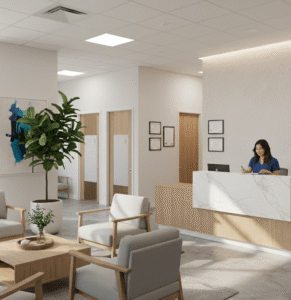Overview
Brittle Bone Disease, medically known as Osteogenesis Imperfecta (OI), is a genetic disorder characterized by fragile bones that break easily, often with minimal or no trauma. This condition affects the skeleton, connective tissues, and sometimes teeth and hearing, leading to a range of physical challenges.
In Korea, OI is managed in specialized orthopedic and genetic centers, where patients receive comprehensive care including medical management, surgical interventions, rehabilitation, and genetic counseling. Korean hospitals focus on early diagnosis, fracture prevention, and improving mobility and quality of life for individuals with OI.
What is Brittle Bone Disease (Osteogenesis Imperfecta)?
Osteogenesis Imperfecta is a hereditary connective tissue disorder caused primarily by mutations in the COL1A1 or COL1A2 genes, which encode type I collagen—a critical component of bone structure. The disease manifests in varying degrees of severity, from mild cases with few fractures to severe forms causing multiple fractures, skeletal deformities, and growth impairment.
OI is classified into several types, including:
- Type I: Mild, most common, normal stature with minimal deformity
- Type II: Severe, often lethal in infancy
- Type III: Severe, progressive bone deformities, short stature
- Type IV: Moderate, variable fracture frequency and deformity
Symptoms
Symptoms of OI vary depending on severity and type:
- Frequent bone fractures, often with minor trauma
- Bone deformities such as bowed limbs or scoliosis
- Short stature and delayed growth
- Joint laxity leading to hypermobility
- Blue sclerae (bluish tint to the whites of the eyes)
- Hearing loss, typically in adolescence or adulthood
- Dental abnormalities such as brittle or discolored teeth (dentinogenesis imperfecta)
- Muscle weakness and fatigue
Causes
Brittle Bone Disease is caused by genetic mutations affecting collagen production:
- COL1A1 and COL1A2 gene mutations reduce the quality or quantity of type I collagen
- Autosomal dominant inheritance is most common, though recessive forms exist
- Spontaneous mutations can occur, leading to OI in families without prior history
Defective collagen compromises bone strength, connective tissue integrity, and other structural proteins, leading to increased fracture risk and associated complications.
Risk Factors
- Family history of OI
- Genetic mutations in COL1A1 or COL1A2
- Previous fractures with minimal trauma
- Skeletal abnormalities at birth
Early genetic testing and family counseling are essential in high-risk families for early diagnosis and management planning.
Complications
OI can lead to numerous complications beyond fractures:
- Repeated fractures and deformities affecting mobility and quality of life
- Chronic pain and musculoskeletal limitations
- Scoliosis or kyphosis, potentially affecting lung function
- Hearing impairment from middle ear abnormalities
- Dental problems including fragile teeth and enamel defects
- Cardiopulmonary issues in severe cases due to skeletal deformities
- Psychological stress due to disability and chronic care needs
Prevention
While OI cannot be prevented due to its genetic origin, complications can be minimized through:
- Early diagnosis and monitoring
- Fracture prevention strategies, including safe environments and activity modifications
- Physical therapy to strengthen muscles and improve mobility
- Nutritional support, including adequate calcium and vitamin D
- Genetic counseling for families with known mutations
Treatment Options in Korea
Diagnosis
Accurate diagnosis of OI involves:
- Clinical evaluation: Assessing fracture history, skeletal deformities, and physical signs
- Imaging studies: X-rays to detect fractures, deformities, or bone density
- Genetic testing: Confirming COL1A1 or COL1A2 mutations
- Bone densitometry (DEXA scan): Evaluating bone mineral density
- Audiological and dental evaluation for associated complications
Medical Management
Medical management aims to strengthen bones, reduce fractures, and improve quality of life:
- Bisphosphonates: Medications that increase bone density and reduce fracture risk
- Calcium and vitamin D supplementation
- Pain management for acute fractures and chronic musculoskeletal pain
- Hormonal therapy in selected cases to improve bone mass
Surgical Management
- Intramedullary rodding: Surgical insertion of rods to stabilize long bones and prevent fractures
- Spinal surgery for scoliosis or severe deformities
- Orthopedic correction of limb deformities to improve function and mobility
- Minimally invasive techniques where appropriate to reduce surgical risks
Rehabilitation and Support
- Physical therapy: Strengthening muscles, improving joint stability, and enhancing mobility
- Occupational therapy: Assisting with daily activities and adaptive techniques
- Assistive devices: Braces, walkers, or wheelchairs for mobility support
- Psychological counseling: Addressing emotional challenges and social adaptation
- Multidisciplinary care in Korean hospitals ensures integration of orthopedic, rehabilitation, and genetic expertise
Prognosis
The prognosis of OI varies widely based on type and severity:
- Mild cases (Type I) often lead normal life expectancy with minimal disability
- Severe cases (Types II and III) may experience frequent fractures, mobility limitations, and associated complications
- Early intervention in Korea with modern surgical techniques, medication, and rehabilitation improves outcomes
- Lifelong monitoring ensures management of fractures, hearing loss, and skeletal deformities
- Korean specialized centers provide genetic counseling, advanced orthopedic surgery, and comprehensive rehabilitation, optimizing both physical function and quality of life
With state-of-the-art orthopedic care, genetic evaluation, and multidisciplinary support, Korea offers effective management for patients with Brittle Bone Disease, focusing on fracture prevention, functional improvement, and long-term well-being.

